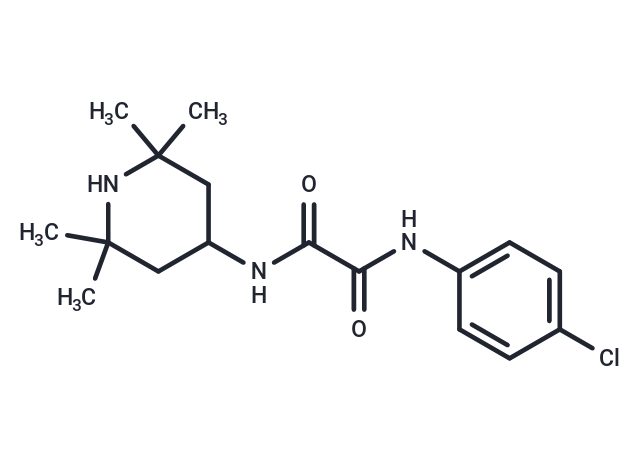Shopping Cart
- Remove All
 Your shopping cart is currently empty
Your shopping cart is currently empty

NBD-556 is a small molecule mimetic of CD4. NBD-556 recognizes the HIV-1 envelope protein gp120 and induces restructuring of gp120 analogous to CD4 binding.

| Pack Size | Price | Availability | Quantity |
|---|---|---|---|
| 5 mg | $29 | In Stock | |
| 10 mg | $48 | In Stock | |
| 25 mg | $92 | In Stock | |
| 50 mg | $143 | In Stock | |
| 100 mg | $215 | In Stock | |
| 200 mg | $317 | In Stock | |
| 1 mL x 10 mM (in DMSO) | $32 | In Stock |
| Description | NBD-556 is a small molecule mimetic of CD4. NBD-556 recognizes the HIV-1 envelope protein gp120 and induces restructuring of gp120 analogous to CD4 binding. |
| In vitro | HIV NBD-556 N-phenyl-N′-(2,2,6,6-tetramethyl-piperidin-4-yl)-oxalamide analogs as a novel class of human immunodeficiency virus type 1 (HIV-1) entry inhibitors that block the gp120–CD4 interaction. The small molecule NBD-556 mimics CD4 by binding the gp120 exterior envelope glycoprotein, moderately inhibiting virus entry into CD4-expressing target cells, and enhancing CCR5 binding and virus entry into CCR5-expressing cells lacking CD4. |
| Molecular Weight | 337.84 |
| Formula | C17H24ClN3O2 |
| Cas No. | 333353-44-9 |
| Smiles | CC1(C)CC(CC(C)(C)N1)NC(=O)C(=O)Nc1ccc(Cl)cc1 |
| Relative Density. | 1.20 g/cm3 |
| Storage | Powder: -20°C for 3 years | In solvent: -80°C for 1 year | Shipping with blue ice. | ||||||||||||||||||||||||||||||
| Solubility Information | H2O: < 0.1 mg/mL (insoluble) DMSO: 33.33 mg/mL (98.66 mM), Sonication is recommended. | ||||||||||||||||||||||||||||||
Solution Preparation Table | |||||||||||||||||||||||||||||||
DMSO
| |||||||||||||||||||||||||||||||

Copyright © 2015-2025 TargetMol Chemicals Inc. All Rights Reserved.